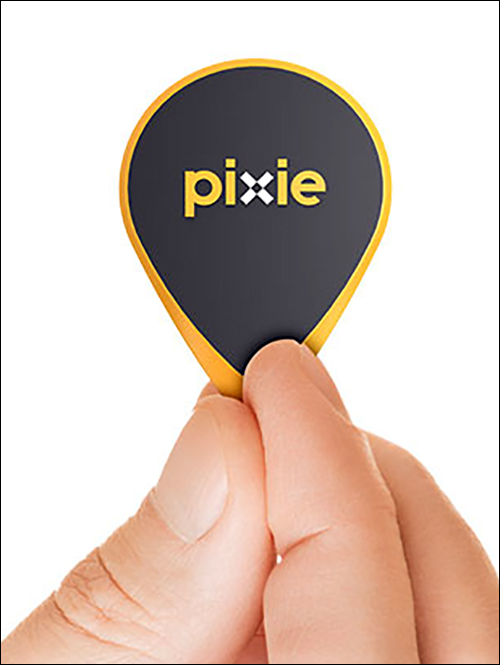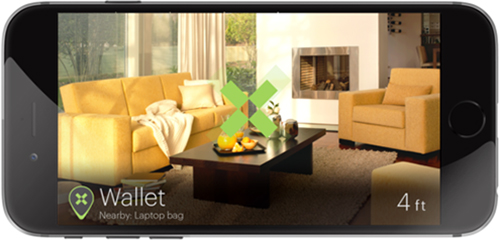As a quick Google search for the phrase “find my keys” reveals, there is no shortage of products on the market these days designed to help consumers find their everyday but often-lost articles, such as keys, wallets, smartphones or tablets. Most of these products, such as Tile or TrackR, are based on the use of small, battery-powered tags, which users can attach to items they want to track, and which communicate with mobile apps via a Bluetooth connection. When placed into search mode, the application, running on a user’s smartphone, analyzes the strength of the Bluetooth radio link in order to determine that phone’s distance from the tag attached to the missing item.
But Pixie, a startup with offices in Tel Aviv and California, entered the thing-finding market last year with a different approach, borrowed from real-time location systems widely used for commercial or industrial applications. Rather than only relying on the Bluetooth signal between a single tag and a mobile device to determine the tag’s location, Pixie’s tags, dubbed Pixie Points, form a mesh network by communicating with each other via a technology called ultra-wideband (UWB) location tracking. A Pixie Point is slightly larger than a guitar pick.
Each Pixie Point contains DecaWave’s DWM1000 UWB module, which measures the distance between tags. To do this, the radio inside each module transmits a signal (compliant with the IEEE802.15.4-2011 standard) and the module calculates the time of flight (TOF) of each tag’s signal, using a process called multiple two-way ranging, enabling each tag’s location to be pinpointed in three dimensions in relation to an anchor tag.
Pixie Points work in conjunction with the Pixie app, which currently is available only for Apple devices via the iTunes website. (The company plans to release an Android version in early 2017.) A user attaches one Pixie Point to his smartphone, on which he runs the Pixie app. That Pixie Point acts as the anchor tag. When he opens the Pixie app in order to locate a specific tag, its location is determined in relation to the anchor tag, and this data is transmitted to the app via Bluetooth.
A single Pixie Point could be tracked by using multiple two-way ranging between it and the anchor tag, but the more Pixie Points deployed inside a home, the more data the UWB system can leverage to triangulate each tag’s location, and thus the more accurate the directions are—up to 30 centimeters (11.8 inches) of accuracy.
The app also offers an augmented-reality feature, whereby the application accesses the phone’s camera and shows the user a view of the room, with superimposed icons that pinpoint the locations of Pixie Points—a user interface with which players of the mobile game Pokéman Go are familiar. This makes it easy to see something otherwise invisible—such as a set of keys that have fallen behind a couch cushion.
Amir Bassan-Eskenazi, Pixie’s CEO, says DecaWave’s UWB module satisfied his search for technology that could provide a higher level of accuracy than existing thing-finders on the market, while also being energy-efficient enough to enable Pixie Point tags to operate for more than a year.
Pixie has been shipping the product since December 2015. During a pre-launch period, a set of four tags cost $39.95, but it now sells for $69.95. The tags have an 18-month battery life. (Tile sells sets of four tags for $70, and says its tags have a one-year battery life.)
Pixie recently announced an $18.5 million series B funding round, and says it will use the funds to scale up production—something the company needs to quickly do, based on social-media posts from Pixie’s customers who complain about months-long waits for their orders.
But Pixie is not limiting itself to the consumer market—it is developing a software development kit and recently released an application program interface to empower developers and third parties to create new apps leveraging the Pixie Point hardware. Rather than target specific markets, Bassen-Eskenazi says he hopes developers interested in the technology will direct how it is used. “We’re only limited by the creativity of developers,” he says, noting that it is too early to say what type of business arrangement—such as white labeling, revenue sharing or licensing—Pixie might make with outside application developers.



